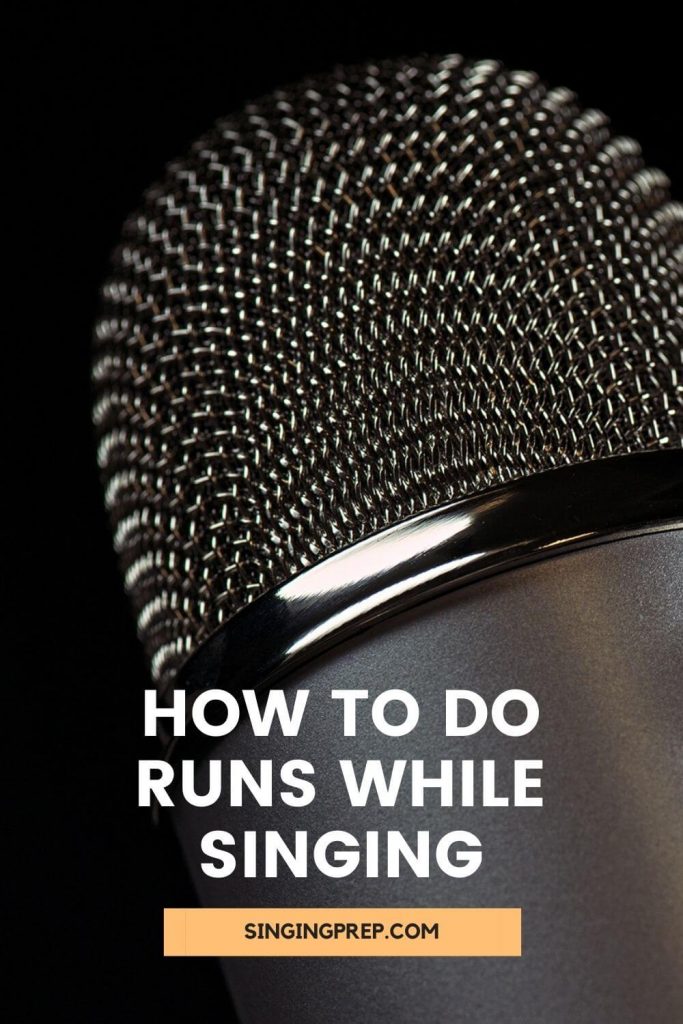Do you wanna find out a quick way on how to do runs while singing? For any singer, vocal runs are an essential integrant. You must have all heard of chords, runs, and riffs, and just like any other layman, the question arises as to what these terms exactly mean.
Vocal runs are basically slightly different from vocal riffs.

A vocal run is essentially the speed of a melodic line, and is usually a fast-moving melodic line and is considered one of the most difficult things to master in the art of singing.
One of the many artists who have mastered this art includes Tori Kelly, Beyoncé, Jessi J amongst the females, and Luke Edgemon, Stevie Wonder, R. Kelly amongst the male ones.
Runs are majorly considered difficult to master because of the fast speed that they necessitate. One has to make sure to be very fast in their speech and make sure that the movement of their larynx is flexible which will enable the individual to hit their voice at a specific note at a faster speed.
With that being said, there are numerous tips to master this art. It is difficult but not impossible after all. Continue reading to find out!
How to create your own vocal runs:
First things first, in order to learn vocal runs, one needs to know which scales to use when. Runs majorly use major and minor pentatonic scales. Never heard of these fancy terms before? Well, there’s no science behind it.
The major pentatonic scale is just the omission of the 4th and the 7th intervals as opposed to the minor pentatonic scales that omit the 2nd and 6th intervals. Some individuals attempt to create their own runs which though sounds like a difficult task but takes only a few simple steps:
- Find the key of the respective song
- Find the pentatonic scale of that specific key
- Draft a few different combinations of these notes and practice them
- Lastly, try to variate these combinations in different orders and rhythms and quickly sing up and down these combinations.
How to master/practice vocal runs:
After you’ve learned what pentatonic scales are, you can now easily practice vocal runs on your own. In order to enable smooth Larynx movements, vocal clarity is very important which is achieved by Warm Up exercises.
Just like anybody’s workouts, the warm-up is necessary for singing. This prevents any vocal breaks and enables a very smooth voice throughout.
Once this is done, make sure that your jaw doesn’t move for every note you sing, because that can be a source of interruption and contribute to breaking the flow. The use of vowels would be a great hack in order to attain this goal since it restricts the movements of the lips and jaws.
The next step is to use descending notes as the use of high pitched voice causes the vocals to vibrate faster and therefore enable quicker notes.
With all of these tips, it is mandatory for the learner to choose some tracks and make sure that the notes are learned at a slower speed alongside the normal speed we converse/sing in. The initial step is to choose a track and then play that track at a slower rate (a metronome could be used for cases where the notes are too fast to register).
The metronome will gradually increase the tempo by 3-5bpm after each trial unless the desired performance is reached. Since you’ve first learned the notes at a slower rate, it will become easier for you to sing them at a faster rate too.
The run should be sung in all the twelve keys, ideally. There are many applications the assist in decreasing and increasing the note speeds too, including “The Amazing Slow Downer”.
Moreover, YouTube is filled with videos that entail tips on how to master vocal runs and things along those lines. In order to learn vocal runs, it is essential that you must know what vocal riffs and vocal embellishments are.
There are a lot of songs that have vocal runs in them but we fail to realize unless we know what these terms actually stand for.
Conclusion: How to do Runs while Singing
These are a few ways on how to master/create vocal runs, and for any further information, YouTube should be referred to.
As cliché as it may sound, practice makes a man perfect, and hence the same applies to this example. The more you practice the notes, the better you will get at doing vocal runs. There is no science behind it and they’re just as essential to singing as spices are to food, one is useless without the other.
They’re added by the singer to enhance the expressions. They might be a little tricky to master but are very essential to the art of singing. You just have to be patient with your working and you should have believed in yourself. Happy Vocal Running!
If you wanna improve your singing and to get professional advice from a professional singer, click here.
Check out some of the most incredible testimonials from people that tried Singorama and improved their singing:

You get a 60-day money-back guarantee on 100% of the money you pay, and you get a 75% discount which makes this deal a one time offer, so don’t wait and get a discount by clicking here.